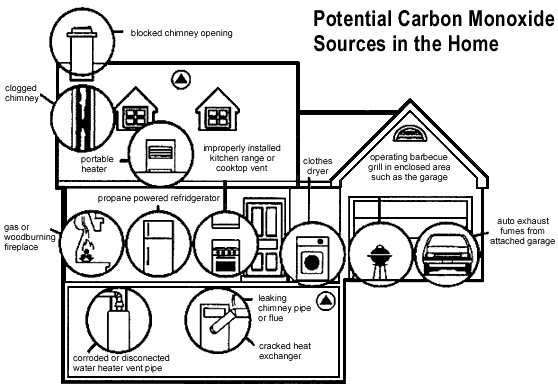Carbon Monoxide — what you need to know about this killer
While awareness about Carbon Monoxide has increased in recent years, a better understanding of how CO relates to your home is in order. Each year, hundreds of people die from CO poisoning — deaths that could have been prevented with appropriate detectors and alarms. CO is called the invisible or “silent killer” because it's a colorless, odorless, poisonous gas. It enters the body undetected through breathing, and its symptoms can easily be confused with other illnesses.
What is CO? Where could it be in my home?
CO is a by-product of imperfect combustion of hydrocarbon fuels, such as oil, gasoline, natural gas, coal, or wood. It is always formed to some degree when something is burned because burning anything never results in perfect combustion. Heating equipment is the leading cause of CO incidents and are usually due to faulty, improperly used, or incorrectly-vented fuel-burning equipment, such as furnaces, stoves, water heaters and fireplaces. A large number of CO incidents take place between November through February, usually between 5 p.m. and 10 a.m. This is the time when most heating equipment is being used at home. It can also come from any gas-fueled equipment including stoves, ovens, dryers, barbecue grills, lawn mowers, generators or cars. Often you won’t know that you have a carbon monoxide event without a working detector alerting you.
How to prevent CO poisoning
•Don’t use a grill, generator or camping stove inside your home, garage or near a window — if you need to warm a vehicle, remove it from the garage immediately after starting it. Don’t leave a car, SUV or motorcycle engine running inside a garage, even if the doors are open;
•Never use your oven or stovetop to heat your home;
•Make sure appliances are installed and operated according to the manufacturer's instructions and local codes. Have your heating system professionally inspected and serviced annually to ensure proper operation;
•Inspect chimneys and vents for blockages, corrosion, partial and complete disconnections, and loose connections;

 39.0°,
Fair
39.0°,
Fair 





